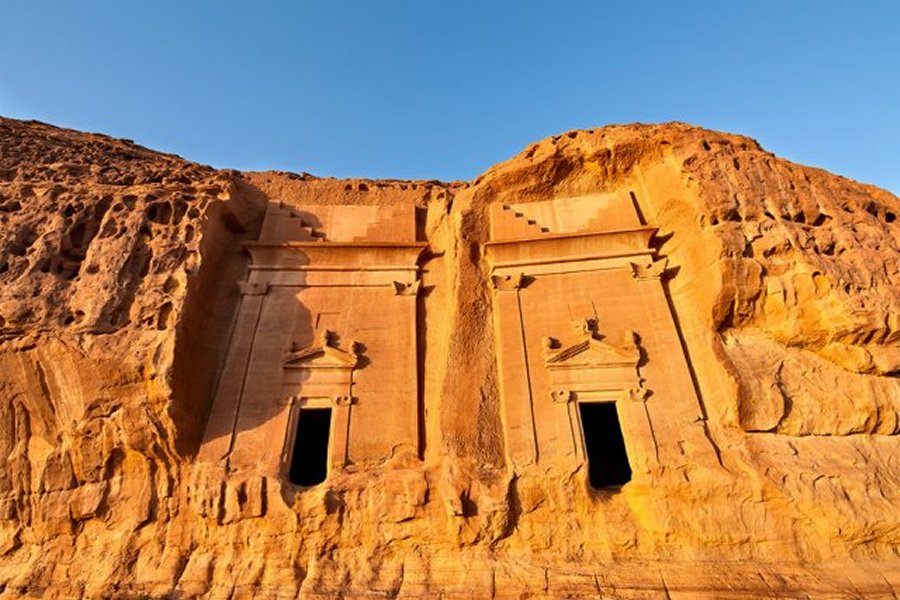Mada’in Saleh: Magnificent Timeless Rock-Cut Tombs And Monuments In The Desert
MessageToEagle.com – Located 20 km (12.4 mi) north of the Al-`Ula town, 400 km (248.5 mi) north-west of Medina, and 500 km (310.7 mi) south-east of Petra, in modern-day Jordan, the impressive ancient site Mada’in Saleh in Saudi Arabia continues to impress the modem world with its magnificent tombs and monuments that reflect the great skills of the masons of their time.
Madain Saleh, also called Al-Hijr or Hegra dates back to the Nabataean civilization.
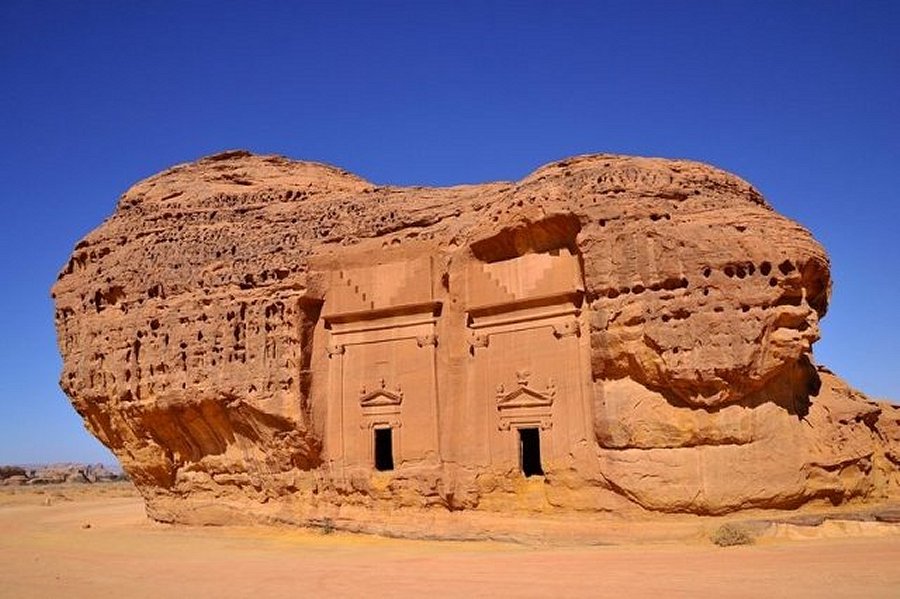
This beautiful place is considered as one of the ´most important archaeological sites in Saudi Arabia and is called “The Capital of the Monuments”.
The site constitutes the kingdom’s southernmost and largest settlement after Petra, its capital.
With its 111 monumental tombs, 94 of which are decorated, and water wells, the site is an outstanding example of the Nabataeans’ architectural accomplishment and hydraulic expertise.
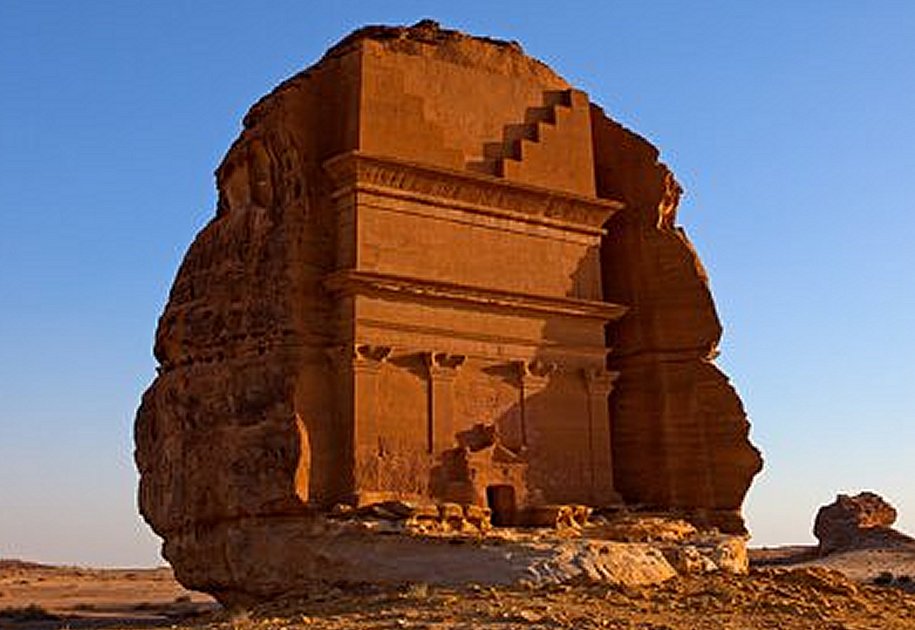
Madain Saleh is the first World Heritage site in Saudi Arabia. Although historians do not know exactly where the Nabataean civilization came from, there is a strong possibility that they came from the Hejaz region of northwest Saudi Arabia, and their history goes back thousands of years.
At its peak, the Nabataean Empire stretched from modern-day Yemen to Damascus and from western Iraq into the Sinai Desert, at least, according to some historians.
No one really knows how large their empire was. Written records of the Nabataean kingdom are sparse as there are only a few surviving documents and scattered inscriptions and graffiti.
However, many thousands of graffiti carved onto rocks and canyon walls clearly demonstrate that almost every Nabataean could read and write, even the shepherds.
This makes us wonder why the Nabataeans did not write down their history. According to historians, the Nabataeans were nomads, dwelling in tents in the desert. They began as pastoral nomads, raising their sheep, goats, and camels in the desert as so many other Arabian tribes have done through the millennia. They also practiced oasis agriculture.
Yet, interestingly within a few short years they also built spectacular and awe-inspiring monuments. The magnificent city of Petra is so impressive, that even today tourists stare in awe at the great ruins. Yet, this impressive city was hidden away in a cleft in the rock with access through a narrow crack in a mountain.
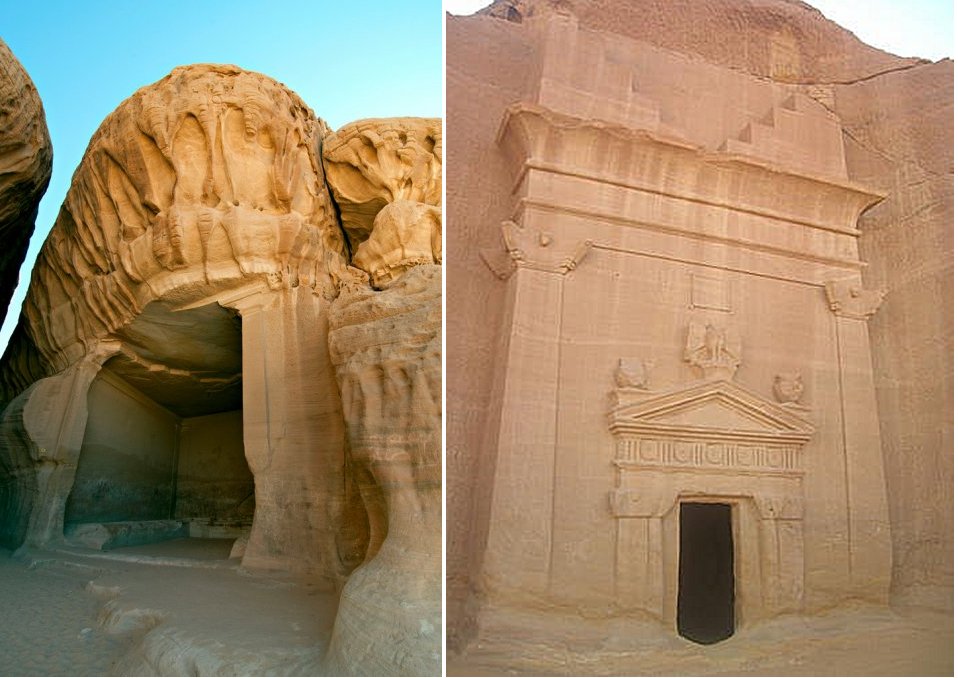
The Nabateans watched the sky systematically and accurately and there are proof of their astronomical observations.
According to scientists who studied the Nabatean’s palaces, temples and tombs these people were skilled astronomers. Great buildings were erected bearing in mind the equinoxes, solstices and other astronomical events that determined the Nabataean religion.
Mada’in Saleh is their second-largest city. According to UNESCO “most of the monuments and inscriptions of the archaeological site of Al-Hijr date from the 1st century BCE and the 1st century CE. But the inscriptions in Lihyanite script and some recently discovered archaeological vestiges are evidence for human settlement as early as the 3rd or 2nd century BCE.
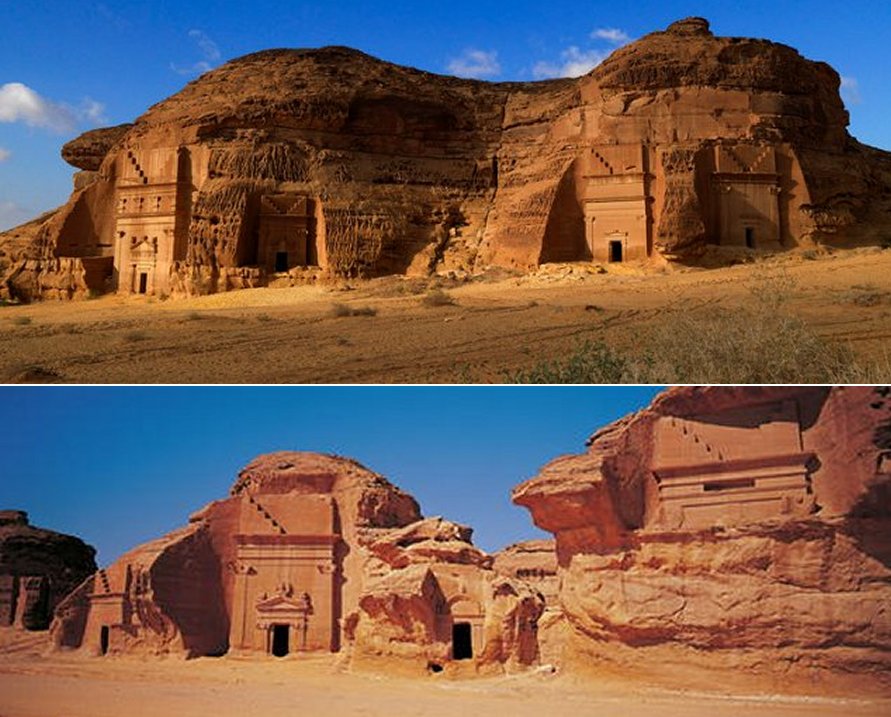
One-third of the tombs, which are amongst the largest, are clearly dated to between 0-75 CE.
Hegra (Mada’in Salih) was a major staging post on the main north-south caravan route. A secondary route linked it to the port of Egra Kome, according to a Greek-language source. Two recently discovered Nabataean sites on the shores of the Red Sea could in fact be this port.”
The ruins of the town of Hegra lie on the plain some distance from their tombs.
Mada’in Saleh remains a timeless and truly beautiful ancient place…
Copyright © MessageToEagle.com. All rights reserved. This material may not be published, broadcast, rewritten or redistributed in whole or part without the express written permission of MessageToEagle.com.
Related Posts
-
 ‘The Battle Of the Tooth Worm’ – Strange Ivory Carving
No Comments | Aug 11, 2015
‘The Battle Of the Tooth Worm’ – Strange Ivory Carving
No Comments | Aug 11, 2015 -
 Medieval Bollock Dagger – Also Known As Kidney Dagger Discovered In Belgium
No Comments | Mar 30, 2022
Medieval Bollock Dagger – Also Known As Kidney Dagger Discovered In Belgium
No Comments | Mar 30, 2022 -
 Othello Syndrome – Brain Disorder Leading To Morbid Jealousy
No Comments | Jan 12, 2016
Othello Syndrome – Brain Disorder Leading To Morbid Jealousy
No Comments | Jan 12, 2016 -
 Unexpected Discovery Of Secret Underground Chamber Reveals Mysterious Neo-Assyrian Rock Panel
No Comments | Jun 2, 2022
Unexpected Discovery Of Secret Underground Chamber Reveals Mysterious Neo-Assyrian Rock Panel
No Comments | Jun 2, 2022 -
 26,000-Year-Old Footprints In Chauvet Cave: Oldest Evidence Of Human-Canine Relationship
No Comments | Dec 29, 2016
26,000-Year-Old Footprints In Chauvet Cave: Oldest Evidence Of Human-Canine Relationship
No Comments | Dec 29, 2016 -
 Will The Oven Bricks Of The Tudor Warship The Mary Rose Be Preserved Before It’s Too Late?
No Comments | Apr 8, 2022
Will The Oven Bricks Of The Tudor Warship The Mary Rose Be Preserved Before It’s Too Late?
No Comments | Apr 8, 2022 -
 Gona, Ethiopia Discovery: Smallest ‘Homo Erectus’ Cranium In Africa And Stone Tools – Unearthed
No Comments | Mar 5, 2020
Gona, Ethiopia Discovery: Smallest ‘Homo Erectus’ Cranium In Africa And Stone Tools – Unearthed
No Comments | Mar 5, 2020 -
 Incredible Ancient Masks – Evidence Of Giants In Bolivia?
No Comments | Mar 25, 2020
Incredible Ancient Masks – Evidence Of Giants In Bolivia?
No Comments | Mar 25, 2020 -
 Historic Graffiti Made By Soldiers Sheds Light On Africa’s Maritime Heritage – New Study
No Comments | May 12, 2022
Historic Graffiti Made By Soldiers Sheds Light On Africa’s Maritime Heritage – New Study
No Comments | May 12, 2022 -
 Celts In Poland: Iron Smelting Furnaces Used By Celts 2,400 Years Ago – Unearthed
No Comments | Dec 1, 2019
Celts In Poland: Iron Smelting Furnaces Used By Celts 2,400 Years Ago – Unearthed
No Comments | Dec 1, 2019

